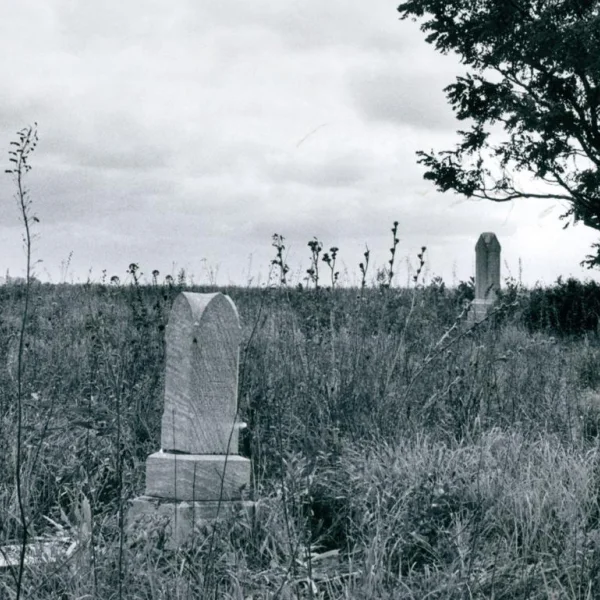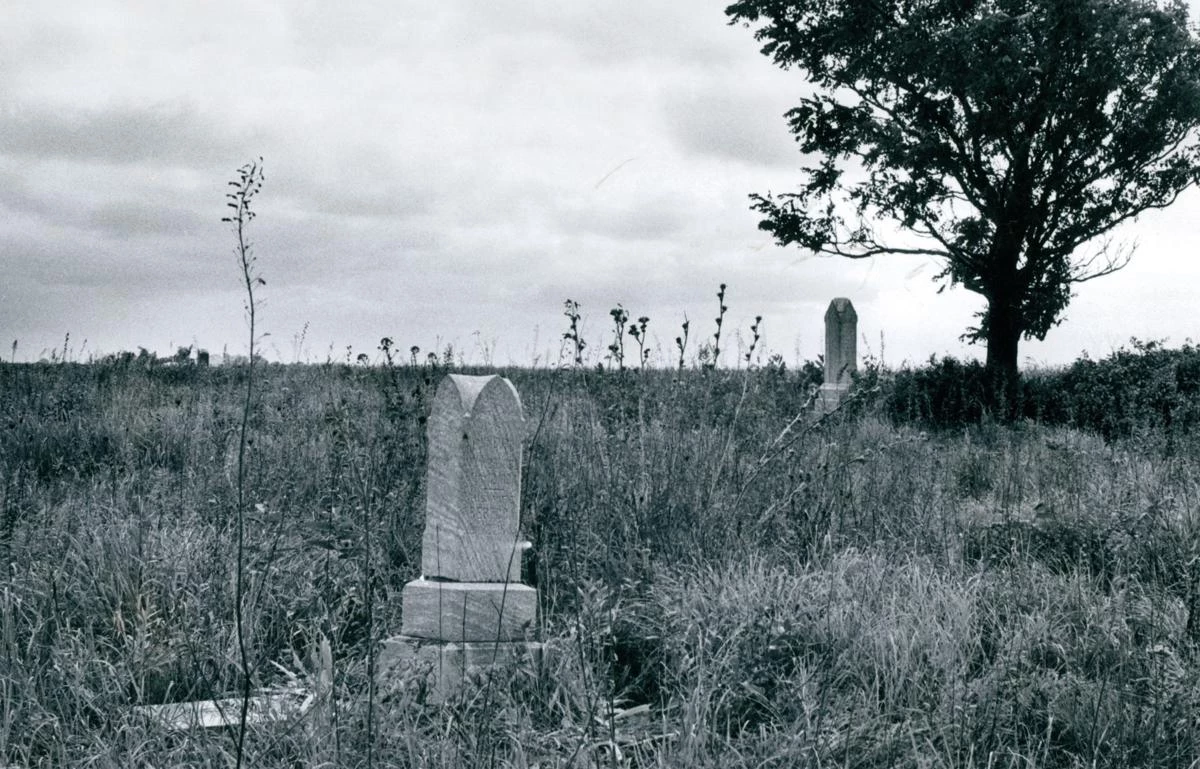In 1971, C.E. “Bud” Wink and Dr. Lee Garber of Fairbury undertook an investigation of five-acre Weston Cemetery, located in nearby Yates Township, McLean County. The local newspaper, The Fairbury Blade, then published an article based on their findings. Wink and Garber’s interest in the old cemetery, though, was not about who was buried there, but rather what was growing there.
And what was growing there was an astonishing variety of prairie grasses and flowers, many rare and native to Illinois. Weston Cemetery, it turned out, was mostly virgin prairie, the last remnant of any size known in all McLean County.
The Prairie State is a nickname that speaks to a lost world, one never to return. Prior to Euro-American settlement, tallgrass prairie covered some 22 million acres of Illinois. In McLean County alone, prairie accounted for almost 670,000 acres, or nearly 90 percent of the county. By the early 1970s, the five or fewer acres at Weston Cemetery, located roughly halfway between Chenoa and Fairbury on U.S. Route 24, was pretty much all that was left—the rest having been mostly plowed under for row crops and pastureland. Today, the Grand Prairie is lost under a seemingly endless checkerboard of genetically modified corn and soybean fields, and the concrete and asphalt sprawl of communities such as Bloomington-Normal and Champaign-Urbana.
Of those 22 million acres of prairie statewide, it’s estimated that only 2,300 acres remain, or about one-hundredth of 1 percent. And of those surviving acres, about 50 can be found in 29 pioneer burial grounds, many scatted in central and east-central Illinois. Similar to Weston, parts or all of these cemeteries were never plowed, and though many were mowed once or twice a year for decades, the prairie survived, waiting patiently for the day it would be brought back to its former tallgrass glory.
Back in 1971, Robert Betz, a professor of biology from Northeastern Illinois State College (now Northeastern Illinois University), got wind of the article on Weston Cemetery in the Fairbury Blade. Intrigued, Betz traveled to northern McLean County to take a look, bringing along colleague Dr. Herbert Lamp. Since the 1960s, Betz had been crisscrossing the state, on the lookout for patches of pre-settlement vegetation, especially in pioneer cemeteries.
“From the character of the soil and the quality of the vegetation, it appears to be in near-virgin condition and should be preserved at all costs,” Betz wrote in a July 6 letter to Dr. Garber of Fairbury. A cursory survey by Betz and Lamp turned up 47 prairie plants, though the naturalist added that “further study will reveal many more species.” Betz was also a consultant with the Illinois Nature Preserves Commission, and so got the ball rolling to designate, and thus protect, Weston Cemetery as a state nature preserve.
From there, things moved quickly, especially with the assistance of Dale Birkenholz, Illinois State University professor of biology. On April 11, 1972, Weston Cemetery received protective status as renamed Weston Cemetery Prairie Nature Preserve. Such designation brought long-overdue changes. For instance, mowing and “tidying up” the grounds, except immediately around existing graves, were no longer permitted. And a schedule of controlled biennial burns was instituted to return the prairie ecosystem to its natural rhythms and fecundity. That said, the nature preserve designation did not void the rights of persons to use existing plots for burial purposes, so the nature preserve remained a cemetery, and has maintained dual status ever since.
Prairie remnants not only serve as sanctuaries for native plants and animals, but as seed banks for the future, and as such have been likened to botanical “arks.” They also stand as models for future prairie restoration efforts. “Weston is a special place,” says Angelo Capparella, associate professor of zoology in the School of Biological Sciences at ISU. “No restored prairie has ever reached the quality of a true remnant for various ecological reasons. So these serve as an invaluable model for where we are trying to get to with restoration.”
At first, ISU’s Department of Biological Sciences served as the environmental custodian of the prairie cemetery. ParkLands Foundation now assumes that vital role. Today, Weston Cemetery Prairie Nature Preserve stands at 5.24 acres, with irreplaceable prairie remnant covering 3.83 acres of that total.
According to a recent count by botanist Roger Anderson, distinguished professor emeritus, ISU, Weston Cemetery contains 71 native prairie plant species, as well as 47 introduced plants. The latter category, notes Anderson, includes “agriculture weeds, introduced species like sweet clover, species planted on graves and species associated with disturbed areas.”
Depending on the season, visitors to Weston Cemetery Prairie will encounter a wondrous array of native plants, many rarely seen these days, let alone in their natural setting. Prairie flowers on the site include four species of aster (sky blue, heath, smooth and hairy); three types of sunflowers (sawtooth, false and prairie); four goldenrods (tall, grass-leaved, early and rigid); dog bane; cream wild indigo; false toadflax; prairie shooting star, downy gentian; spiked lobelia; violet wood sorrel; false dragonhead; common mountain mint; and many others. Prairie grasses found at the cemetery include big and little blue stem, yellow star, blue-eyed and prairie dropseed.
There are no trails at the cemetery prairie, so visitors are encouraged to tread lightly. Large groups are discouraged, and visitors are prohibited from collecting plants or seeds.
The community of Weston was laid out in 1867. It served—as still does today—as a grain siding for the Toledo, Peoria and Western Railway (running east-west, TP&W serves as the northern border of Weston Cemetery Prairie). A year or two after Weston’s founding, four local men of some prominence organized the Weston Cemetery Company, and in 1869 or 1870, they purchased five acres east of Weston for a burial ground (although the deed was not recorded until 1884).
The fact that Weston never grew to the size of its neighbors, Chenoa and Fairbury, likely saved the cemetery’s prairie remnant. “Of late years no one has given any attention, with the result that it has been overgrown with weeds, and few burials have been made there,” reported The Fairbury Blade in September 1914 on neglected Weston Cemetery. For the past 73 years, the cemetery has been the responsibility of Yates Township.
The most complete records on Weston Cemetery are found at the Lexington Genealogical and Historical Society (one of the great resources for local and family history in Central Illinois, by the way!) According to available records, more than 80 people have been laid to rest at the cemetery, with the earliest known burial believed to be 1870 or 1871, and the latest in 1955 or 1956, though most of the burials occurred between 1880 and 1915.
As with any cemetery, each burial tells a story. On December 4, 1900, three-year-old Iva “Pearl” Adams burned to death when her clothes caught fire as she and her twin sister played with matches in their family home in Weston. She was interred at Weston Cemetery two days later, on December 6.
“In the great gloom there is a radiant hope that the never-dying soul of this sweet little girl is with the angels of God,” remarked The Fairbury Blade at the time. One can hope that the splendor of the native prairie grasses and flowers above her earthly remains offers solace—and a sense of peace—to both those in the sweet hereafter and those still here, among the living.

